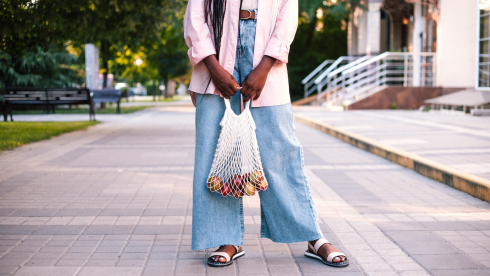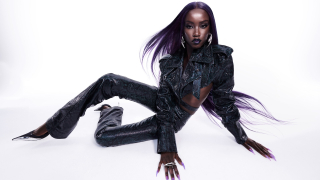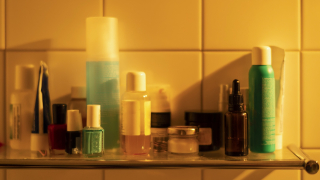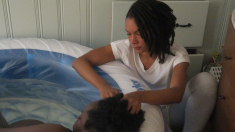Thirty years has passed since the cinematic rap classic Wild Style opened in a grimy Times Square theater in 1983, and much has changed in the world of hip-hop culture. Gone are the cramped clubs, those grubby hole-in-the-wall spots where many inspiring crews rocked the mic and spun their wheels of steel. Gone too are the days when spray-paint wielding artists snuck into the subway lay-ups and train yards, bombing the big steel beasts with colorful murals some called “masterpieces.”
Thankfully, those bombed-out looking buildings that once lined the broken-glass-everywhere boulevards of the Bronx were razed years ago, replaced with suitable housing. Yet, much like the landmark rap tracks by Spoonie Gee or the Treacherous Three played on your favorite old school hip-hop show, Wild Style has managed to endure through the years of corporate takeovers and trap music.
Serving as a brilliant artifact of a time before Lil Wayne and Drake bum-rushed the graffiti covered castle of hip-hop, Wild Style was conceived by painter/producer Fab 5 Freddy as a way of blasting out to the world what was going down in the cultural Mecca of New York City.
Coming out of the gang and graf world of Bedford-Stuyvesant, Brooklyn, Fred Brathwaite was simultaneously street smart and book wise. He, too, had painted trains with a cool crew when he was a teenager—including an infamous soup can tribute to pop artist Andy Warhol. But by the early 1980s, he was chilling on the Lower East Side with his buddy Jean-Michel Basquiat. The duo crashed art shows and hung out with Blondie singer Deborah Harry, producer Chris Stein and future GQ Style Guy Glenn O’Brien.
“I had read somewhere [that] for a culture to be a complete form, it had to have art, music and dance,” he says from his Harlem brownstone. “That was the grain of what became Wild Style. I felt that seeing breakdancing, graffiti, rapping and deejaying in a film would only make the culture stronger.”
Partnering with independent director Charlie Ahearn in 1980 (who’d made his debut with a small film called The Deadly Art of Survival the year before), the two went on a three-year mission to get Wild Style made. Between trying to get funding, befriending future cast members Lady Pink, Busy Bee, the Cold Crush Brothers, Crazy Legs, Rammellzee, Grandmaster Flash and countless others, they journeyed to the Bronx every few days, determined to create a lasting document of those early hip-hop years.
Although still a few years before from the crack cocaine plague devastated the city, transforming New York into a dystopia straight out of cyberpunk novel, the town was still tough. “We were going up to these rough neighborhoods in the Bronx that we knew nothing about,” recalls Freddy, who also co-starred in the movie as the business minded hustler Phade. “I was still living in Brooklyn, but Charlie and I would journey to the clubs and parks, meeting different people involved in the movement.”
While Freddy would later produce other projects, including New Jack City, this was his big debut both on-screen and behind the scenes. “Wild Style was like my personal film school.” In 1988, he parlayed that on-screen persona into a television gig, becoming the first host of Yo! MTV Raps up until 1996.
Freddy also recruited his Lower East Side homie Lee Quiñones, graf artist extraordinaire, to star in the picture as the lead character, Zorro. A talented Bronx bomber who paints the trains for fame, Zorro is soon tempted to crossover to the downtown art world. In real life, Quiñones was one of the first street artists to make the transition into the moneyed art world.
Although Lee started out spraying trains in ’74, today he’s a renowned painter whose work has been shown in major museums throughout New York, California and Europe. Yet to some, he’ll always be the conflicted graffiti kid Zorro, torn between “makin’ money like Barry White” and keeping it real in the yards.
“Everyone knows me from Wild Style,” Lee says from his Brooklyn studio. “They tell me about how the movie changed their lives. There was a lot of stuff happening in the hip-hop world back then, and Wild Style was the perfect way for people to digest it. That early ’80s era was a very moving period for a lot of folks, including myself.”
Getting most of their loot from overseas investors in Japan, Germany and England, Charlie Ahearn shot Wild Style in a cinéma vérité style that walks a thin line between arty and amateur. Reminiscent of John Cassavetes’s jazz infused, race-based debut Shadows, Ahearn was as influenced by cheapo karate films (especially those starring Bruce Lee) as he was by West Side Story.
“The funny thing is, because Wild Style is so rough looking, many people thought it was a documentary. I like to think of it as a musical.” Debuting in Tokyo first, the flick soon opened in a Times Square movie joint called the Embassy. Although this was a first-run movie theater, the neighborhood was filled with B-movie grindhouses where many New York City ghetto kids flocked.
Opening night was chaotic and the theater was trashed. “The theater owner called me up screaming that the hip-hop kids had torn out seats and tagged the walls,” Ahearn laughs. “I was like, ‘What do you want me to do? I’m only the filmmaker.’ ”
Author and actor Bönz Malone was one of the young vandals in the crowd that first night. “Man, I was 12 years old, and I had to wait for my grandmother to go to sleep so I could sneak out,” Malone says. “I put my life on the line, but it was worth it. The theater was so crowded I had to sit on the stairs. And the whole movie was in the audience. I saw Grandmaster Caz, Rock Steady, Grandmaster DST and Lee. That was the night I realized I really wanted to be down with hip-hop.”
Indeed, Malone wasn’t alone. Wild Style fever spread throughout the world. “The impact was almost instantaneous in the form of imitation,” Ahearn remembers. “Kids in Japan and throughout Europe were breakdancing, buying turntables and writing rhymes. Turkish kids went to the Berlin Wall and sprayed the Wild Style logo on it.” Graf artist Zephyr, who also appears in the movie, originally designed the logo. “It didn’t matter that [people in other countries] didn’t understand the language, they still understood what the movie meant.”
Writer Brian Coleman, author of Check the Technique, remembers buying the film years later on bootleg in Times Square. “Some of the acting wasn’t Academy Award caliber, but Wild Style is authentic,” he says. “Young fans that care about the foundation of the culture can watch this and understand that hip-hop came out of a real community. Charlie had all the right people involved and, for me at least, there is no better film about hip-hop culture.”
In 2013, Charlie Ahearn unveiled his latest film, a documentary on dynamic photographer Jamel Shabazz. Meanwhile, Fab 5 Freddy has returned to his first love of making art. This year, he was also featured in Jay Z’s museum piece music video, “Picasso Baby.”
Film producer Lisa Cortes saw Wild Style in “a ratty theater” in her hometown of New Haven, Connecticut, when it was released in 1983, and has not forgotten its bombastic power. “Wild Style was like a bird’s eye view into the origins of the four elements of hip-hop culture. Thirty years later, it is still real, honest and fresh.”
Wild Style returns to theaters in a newly remastered version today at the IFC Center in New York and select markets this fall. The newly remastered Wild Style 30th anniversary collectors’ edition DVD is available October 15.
Cultural critic Michael A. Gonzales has written cover stories for Vibe, Uptown, Essence, XXL, Wax Poetics and elsewhere. He’s also written for New York and The Village Voice. Read him at Blackadelic Pop and follow him on Twitter @gonzomike.













